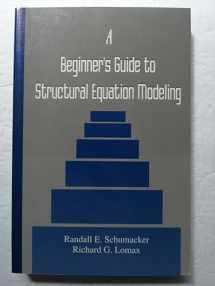
A Beginner's Guide to Structural Equation Modeling
Book details
Summary
Description
This book reviews correlation and covariance among variables, followed by multiple regression and path analysis techniques to better understand the building blocks of structural equation modeling. The concepts behind measurement models are introduced to illustrate how measurement error impacts statistical analyses, and structural models are presented that indicate how latent variable relationships can be established. The modeling examples are presented using either EQS 5.0 or LISREL8-SIMPLIS, both of which have an easy-to-use set of commands to specify measurement and structural models. The authors focus on the steps taken in analyzing theoretical models: * specifying a model based upon theory or prior research; * determining whether the model can be identified to have unique estimates for variables in the model; * selecting an appropriate estimation method; * testing the model and interpreting fit indices; and * respecifying a model based upon suggested modification indices, which involves adding or dropping paths in the model to obtain a better model fit. Not intended as an in-depth presentation of statistics or factor analysis, this text focuses on the basic ideas and principles behind structural equation modeling. It assumes a basic understanding of correlation.


We would LOVE it if you could help us and other readers by reviewing the book
Book review



